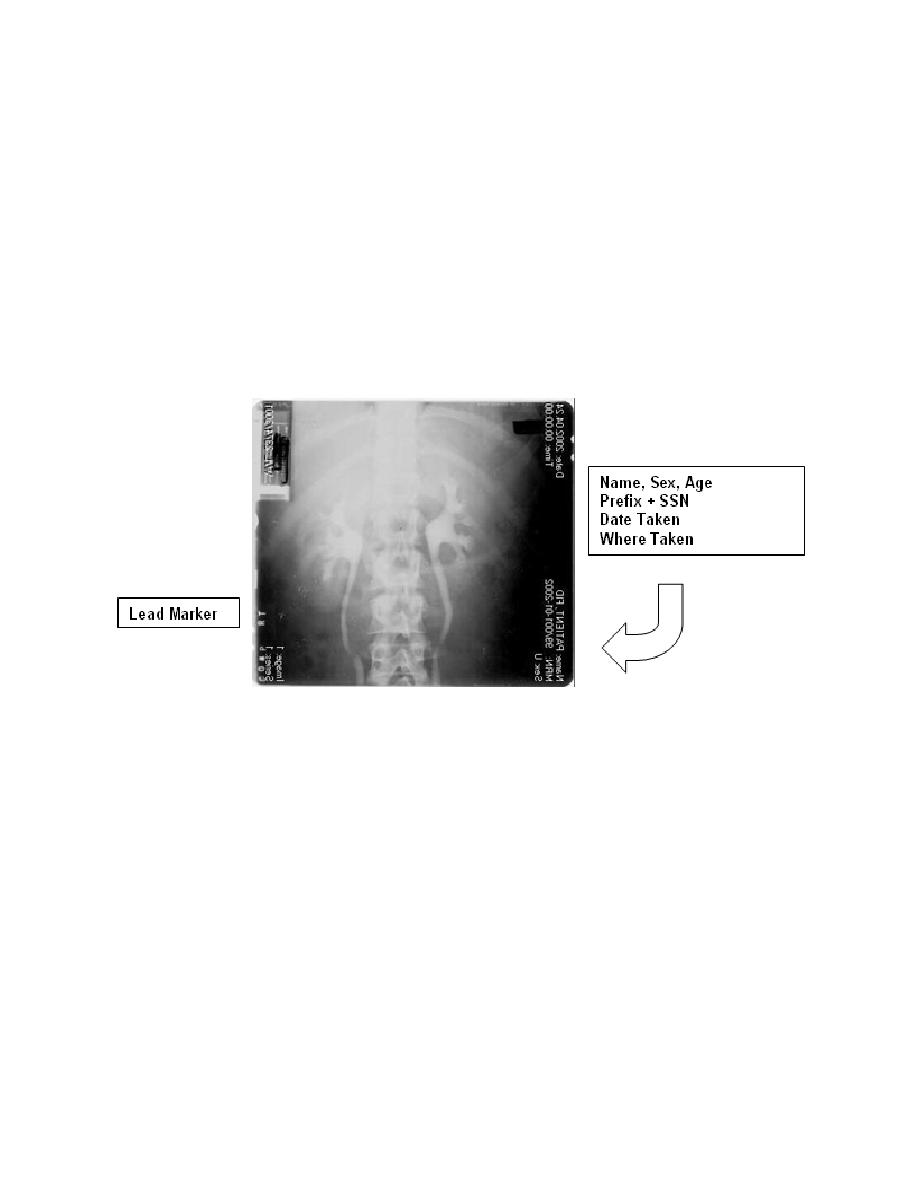
4-11. A FILM IDENTIFICATION SYSTEM
a. The radiology department must have effective film identification and marking
system if it is to provide X-rays that are accurate and useful to the radiologists who need
them. Film must be accurately identified with the appropriate patient and clinic. The
right and left sides of the radiograph as well as other necessary information must be
indicated on the film.
b. Figure 4-23 shows the minimum required identifying information. Note that
the patient's name, sex, and age are entered on the first line. On the second line is the
family prefix plus the social security number. On the third line is the data the X-ray was
taken. On the fourth line is the institutional identity. Also placed lower down on the film
is the identifying marker (L or R) used to provide positional orientation.
Figure 4-23. Minimum required permanent film identification
4-12. FILM IDENTIFICATION SYSTEMS
a. X-ray Exposure (Direct) Method. Numerous methods of marking film for
identification are available. In the direct method, the identifying information is placed
directly on the film and radiographed as the X-ray is taken.
b. Flashing/Light Method. The identifying information may also be recorded by
flashing it onto the film in the darkroom or the examination room before development.
This method, known as the flashing or light method, is the one most commonly used
today. It involves writing or typing the identifying data on a three-by-five-inch card
(figure 4-24) and then flashing (photographing) the information onto an unexposed
portion of film.
MD0961
4-28


 Previous Page
Previous Page
